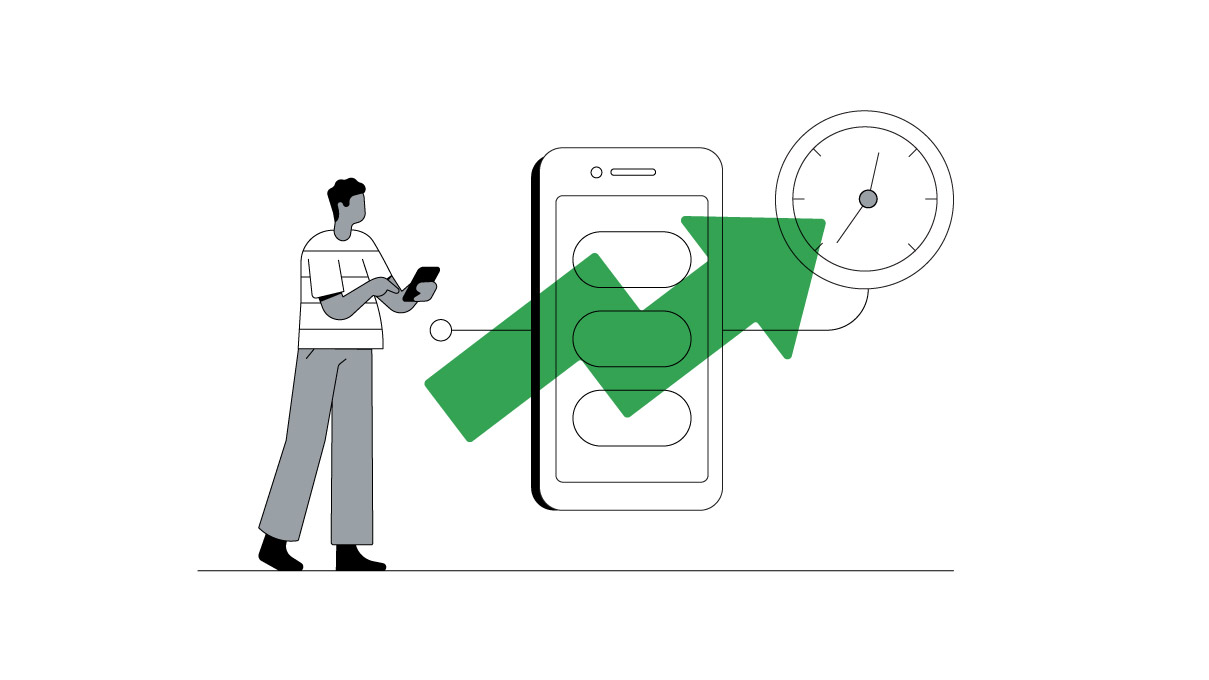What changes will digital innovation bring to marketing over the next few years? Google’s Senior Vice President of Americas Sales, Dennis Woodside, peers into the future of advertising and tells us to expect mobile payments, more two-way interaction between marketer and customer, and real-time everything.
The average CMO is just shy of 50 years old. He or she learned their art two decades ago. Then, the web was still a novelty and advertising was mostly mass-communication. The aim was to “raise awareness,” “drive consideration,” “create purchase intent.” Even the industry terms suggested a one-way relationship: something done to, rather than with, the consumer.
That’s changed. Today, we live in a world of engagement. People don’t want to be bludgeoned with broadcasts. They want, and expect, something more sophisticated, more considerate. And they are consuming media everywhere—TV, online, mobile—sometimes simultaneously.
This shift has edited the CMO’s job description, forcing him to toss the MBA textbooks and learn on the job. The acceleration of everything is not going to stop, so we need to keep a relentless focus on the future—to be thinking years, not quarters, ahead. That’s what we try to do at Google. Here’s a glimpse of what we’re expecting to see by 2015.
We’ll get the web anywhere and everywhere. There will be over 10 billion mobile subscribers and 300 million internet-enabled televisions. This will increase appetites for non-traditional content, with half our screen time spent on social networks, UGC, citizen journalism and blogs.
“People don’t want to be bludgeoned with broadcasts. They want, and expect, something more sophisticated, more considerate.”
The acceleration of everything is not going to stop, so we need to keep a relentless focus on the future—to be thinking years, not quarters, ahead.
Dollars will go where the eyeballs are: 40 percent of spend will go to “digital” (a $50bn global market today, growing more than 20 percent a year). The funding model for professional content will change: lots of lean, niche professional content will dominate, alongside (much less) blockbuster content. And clients will migrate to a handful of media and creative agencies that invest in differentiating digital capabilities.
Mobile money will be the norm: devices will enable two thirds of purchases, and pay for half
All retailers will go mobile. Couponing, circular spending and formats will migrate, with offers that are more targeted, personalized, and accountable. New mobile services will spring up that, knowing what store people are in, provide price and availability on inventory without being asked. Pricing transparency will disrupt traditional retailers so much that “good service” will once again become a differentiating retail factor.
Wireless payment possibilities will change shopping forever, for buyer and seller. People will be able to search for products and check for local offers on their phone, then visit the store and use their near field communication (NFC)-enabled device to pay (which is potentially more secure and enables automatic collection of store loyalty points). A new class of services will emerge to facilitate offers, payments and payment clearance. Major credit card companies will participate, but are not guaranteed to win. A PayPal of the mobile space may emerge.
From 80 percent “push” to 80 percent opt-in, and two-way
One-way participation in content will decline to under 20 percent. The consumer will gain even more control and choice. Technology is already empowering them to skip ads, or micro-pay for content, or opt out altogether. And most media is enabling consumers to contribute and comment on their own terms, and they will. According to Erik Qualman, founder of Socialnomics, 78 percent of consumers trust peer recommendations. Far fewer trust advertisements. The consumer will increasingly rely on such “social” branding and friend recommendations. Brands that build web services that foster community and loyalty gain equity; those that rely solely on price and selection fade.
The deluge of information could drown the consumer, though. Intermediaries will build business models on curating content and facilitating choices. Tomorrow’s services help answer questions about complex, value-added products and services such as, “Which lawyer within 20 miles of my home has expertise on tax issues in living trusts?” The local and personal becomes more important.
Real-time will rule: dominating social search rank, pricing, optimization
We will move from just recording data to modifying the system in real time: continuous improvement. Before, you’d run TV ads, analyze, and six-to-nine-months down the road you could change strategy if needed. Now you can run 1,000 different ad types to 1,000 different demographics, then measure and iterate on the spot.
The demand for real-time information and capabilities will continue and increase, as will the desire for improved advertising efficiency. Old, non-optimizable formats will go by the wayside. Display will boom, as real-time bidding becomes possible, making every campaign mutable-by-the-moment, enabling ad buyers to tailor bids and ads, impression by impression, across a wide range of ad space. Half the ads targeted to particular audiences will use real-time bidding.
“We will move from just recording data to modifying the system in real time: continuous improvement.”
Digital Tipsheet: The Four Bs
BE FOUND Search is still the killer app. It’s more location-based (knows where you are), personalized (offers to you), visual (Google Goggles) and real-time (price, availability, news) than ever. Roy’s Restaurants introduced hyperlocal ads, delivering clickable, down-to-the-block level information about a business at the right place and at the right moment and got an 800 percent ROI on their advertising investment.
BE ENGAGING You could be dull in another era. Not this one. For creativity, look at American Express mastering the art of the live stream, a newly potent medium. Their live-streamed concerts, “Unstaged: An Original Series from American Express,” created an absorbing environment on the web and in the arena, engaging users with the music of Arcade Fire and John Legend—and with their brand.
BE RELEVANT Real-world, real-time relevance matters more than ever. A Google client in the auto insurance business uses click-to-call so that when a potential customer searches their mobile phone for car insurance, the company shows them an ad that can immediately connect the customer to its call center and begin the application process on the spot. The consumer, right there on the lot, could get their insurance before they drive away.
BE ACCOUNTABLE Ford has identified five key buying actions based on closely measured online behavior. If someone configures a car online, Ford now knows they are more likely to buy one. The car company uses this information to target digital advertising, generating high-value leads and test-drive registrations for its dealers. Unlike traditional local media, Ford can measure the exact return on this investment. Accountability pays.






